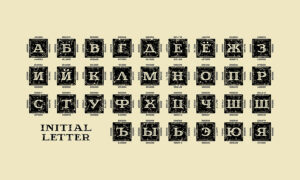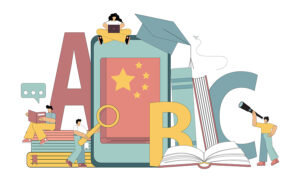
The English got their alphabet when Christian monks arrived in the 6th century CE with their Latin alphabet to replace the native runes.
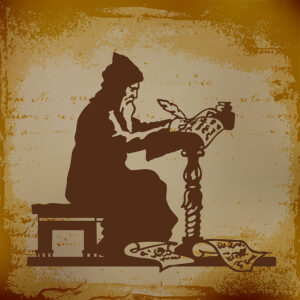
Near the end of the 9th century CE, Charlemagne—king of the Franks and Holy Roman emperor—ordered a monk named Alcuin to devise a unified alphabet of letters that could be read by his subjects throughout the Holy Roman Empire. Alcuin was actually an English scholar, clergyman, poet and teacher. At the invitation of Charlemagne, he became a leading scholar and teacher at the Carolingian court in the 780s and 790s CE.
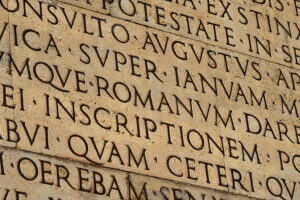
During this time he perfected the Carolingian minuscule (already in existence in a rougher form), an easily read manuscript writing using a mixture of upper- and lower-case letters. The script was developed so that the Latin alphabet of a late-4th-century Latin translation of the Bible could be read by the educated. The Carolingian minuscule, developed over three centuries, was used in the Holy Roman Empire between approximately 800 and 1200 CE. Codices, pagan and Christian texts and educational material were written in the Carolingian minuscule.
But, where did the monks get their alphabet? It turns out that the letters of the Latin alphabet were borrowed from the Greek, but indirectly from an ancient Italian people known as the Etruscans.
In an article by N.S. Gill, “Latin Alphabet Changes: How the Roman Alphabet Got Its G,” he explains that as long ago as the second millennium BCE, the Greeks based their written language on a Semitic alphabet, the Proto-Canaanite script.
The Greeks passed it on to the Etruscans, the ancient people of Italy who the Romans sacked in the 5th century BCE. By the 7th century BCE, that alphabet was used not just to render Latin in written form, but several others of the Indo-European languages in the Mediterranean region.
Gill goes on to explain that in the first century BCE, the Latin alphabet originally had 21 letters. But as the Romans became Hellenized (became Greek in form and culture), they added two letters at the end of the alphabet: a Y for the Greek upsilon, and a Z for the Greek zeta, which then had no equivalent in the Latin language.

All right, so where did the Semitic alphabet come from? In writing for History.com, Laura Schumm says that before the alphabet was invented, early writing systems had been based on pictographic symbols known as hieroglyphics (like the runes of the Norse invaders and early England, as well as the Egyptians).
“Sometime during the second millennium BCE (estimated between 1850 and 1700 BCE), a group of Semitic-speaking people adapted a subset of Egyptian hieroglyphics to represent the sounds of their language. This Proto-Sinaitic script is often considered the first alphabetic writing system, where unique symbols stood for single consonants (vowels were omitted).”

Written from right to left and spread by Phoenician maritime merchants who occupied part of modern Lebanon, Syria and Israel, this consonantal alphabet consisted of 22 symbols simple enough for ordinary traders to learn and draw, making its use much more accessible and widespread.
By the 8th century BCE, Schumm says, the Phoenician alphabet had spread to Greece, where it was refined and enhanced to record the Greek language. ”Some Phoenician characters were kept and others were removed, but the paramount innovation was the use of letters to represent vowels.”
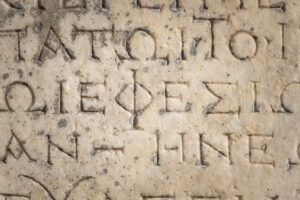
Many scholars believe it was this addition—which allowed text to be read and pronounced without ambiguity—that marked the creation of the first “true” alphabet. Over time, the Greek alphabet gave rise to several others, including Latin, which spread across Europe, and Cryllic, the precursor of the alphabet of modern Russian and other Eastern European countries.
